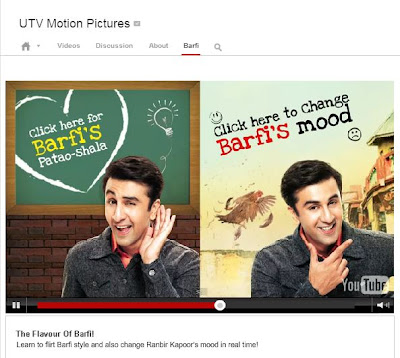Movie promotions in 1990’s were limited to TV promo, very
few newspaper ads and posters outside the movie halls. Gone are those days and
then came promotions of songs on Radio, associating with various chat shows, TV
shows, pre-launch PR, post launch PR and associating with brands which endorses
the movie during the TVC.
Since two years even these strategies have seen a shift with
a high percentage of marketing budgets being accommodated with Social Media. It
all started with a Wiki page followed by Facebook page, YouTube brand channels,
Twitter handles and even hash-tag promotions. Apps (Applications) are built
considering the possible engagements with the consumer.
Let us take a look at the Social Media Strategies that are
used for Movie Promotions:
- Facebook page – All most all the Bollywood or Hollywood movies have their independent FB page. As per the trends in Indian Bollywood industry, movies which are already high budgeted are doing lot of activities- both online & offline, but low budget movies are also investing on Social Media.
- Facebook app with an engagement – My personal view to some of the apps on Social Media related to movie promotion has been very good. While some of them are extremely bad when it comes to engaging the consumer from the movie point of view. Some of the examples are from blockbuster movies Kahaani and Once Upon a Time in Mumbai. While the former movie app was built to ‘find the lost husband of a pregnant lady’, the latter was more fun by getting app users appear as characters in the movie – the hairstyle, clothes, shoes, accessories and name.
- Twitter handle – Initially it started as a handle from the makers of the movies, so that each time they make a different movie, the handle remains same. But now trends show that there is Twitter handle of the maker and one for individual movie. The shelf life of both – the Facebook page and the Twitter handle remains very small i.e. pre-launch and launch phase. Examples are listed with pictures below.
- Twitter contests with hashtags – Most of time the hype is created by the hashtags used by the marketers of the movie. These hashtags are promoted across Twitter for a contest where in the players are given an opportunity to win the tickets or meet the star cast. This involves an engagement from masses and thus has been success on twitter
- Twitter handles of the star cast – Actors have huge fan following and this has been taken as an advantage to promote their movies. They tweet about teaser posters, songs and behind the scenes which excites people to interact and even go to watch the movie
- YouTube branded Channels – YouTube page looks like a website which is a collection of songs. It can have multiple Tabs to differentiate one movie from another.
- YouTube channel with engagements – It has been a recent trend on Twitter to work with interactive videos series during movie releases. This includes consumer engaging with the brands and series of videos are playing as result. Movies like Barfi and Ra.one had seen such a phenomenon success on their YouTube campaign much before the release of the movie. Now one can imagine that keeping Rs 15cr on online promotions of Ra.one out of Rs. 40cr total marketing budget made it as a pre-launch success with 2.5 lac YouTube views on the channel and more than 1.5 Lac likes on the Facebook page
- Standalone Websites– It is a method in which brands are building their own properties. Everything from videos promotions to a pre-launch game for engagement is hosted on this platform. Movies yet to be released like Krrish3 are already diverting the consumers with new initiatives.
- Integration with offline activities – Play a contest on Facebook and get an invite for the movie launch press conference. Also win merchandise of the movie signed by the actor. Or get the movie tickets with an avatar of the movie theme. These type of strategies are evolving and have seen a success on Social Media
- Associating with brands for co-branding – Many brands have brand Ambassadors who are famous personalities. If they are actors of the movie which is yet to be launched, the brands also indulge in co-branding activities.







Since the whole concept of Marketing is evolving and thus is Social Media, there are many innovations possible in making a brand out of anything. However, these activities are restricted to create hype before the launch and do not ensure good reviews of the movie.




